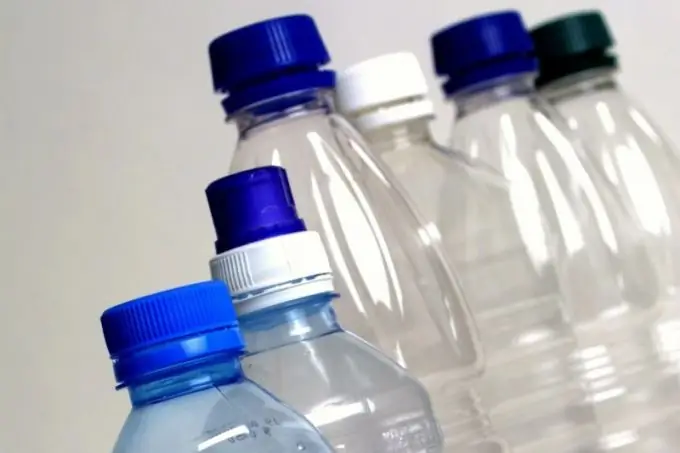Plastic bottles serve as a universal container for liquids. They have an advantage over glass containers due to their elasticity and larger volume. Plastic containers first appeared in the United States in 1970 and have since become widespread throughout the world.

Instructions
Step 1
The manufacture of plastic bottles is carried out in various ways that allow you to achieve a greater degree of protection for the product being bottled. They are produced on special equipment, and the production technology itself is called “internal inflation”. The process itself is carried out in two stages.
Step 2
First, special preforms are made - blanks resembling a test tube in shape, having a neck and a place for installing a special ring. These samples are formed using special equipment consisting of cells of various sizes. The resulting flasks are evenly heated in submersible stations. Then the preforms are placed in separate nests for 10-15 minutes, where further heating takes place.
Step 3
After heating, the samples undergo an additional processing stage called equilibration. In its process, the temperature is distributed over the surface of the workpiece in order to avoid the appearance of deformations during the blowing process. If the equilibration is too short, the walls of the bottle will not be uniform in thickness. Excessive heat can deform the neck during further processing. During this procedure, the preforms are heated to 100-110 degrees.
Step 4
After that, the workpieces are delivered to the output section using a special feeding device that monitors the correct position of the workpieces in the molds. Then the product is fixed in the machine and begins to stretch in the vertical plane. Air is supplied through the neck of the future bottle. After shaping, the workpiece is cooled, pressing against the cold walls of the mold, and becomes rigid.
Step 5
After cooling, plastic bottles shrink slightly, and therefore the storage temperature after production is constantly monitored. This is done in order for the material to be compressed less intensively in the future, which makes it possible to reduce the difference between the sizes of bottles released at different times to a minimum.







